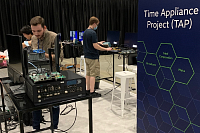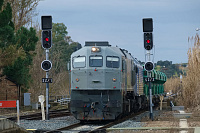SD-WAN’s promise of finally delivering WAN connectivity fit for today’s enterprises – from huge cost savings to unprecedented networking simplicity – has created a lot of buzz. But will it really meet your needs and expectations?
Companies around the globe are at various stages of supplementing their traditional MPLS WAN service with newer SD-WAN solutions that promise cost savings, improved security, simplified connectivity and a host of other benefits. Whether your company is considering a complete overhaul of its network to cloud-based SD-WAN or simply reducing bandwidth costs by running cloud-based services, like AWS or Office365, over broadband instead of MPLS, a central question is always: will SD-WAN deliver on its promise?
If you are planning, building or updating the network, you will have some idea of the levels of latency, bandwidth, etc, to expect once you go live. However, given the complexity of most corporate networks, and the number of potential adverse scenarios in which the network could experience over its lifetime, you may find yourself in the awkward position of testing and optimising the solution on the live system, with all the risks and problems this entails.
Take the guesswork out of migrating to SD-WAN.
Aiming to avoid this perilous situation, network emulators are designed to verify the robustness of new network products or applications. Acting as a network in a box, network emulators such as the Calnex SNE can perfectly mimic the real-world conditions under which a new SD-WAN or hybrid network will need to perform.
Each SD-WAN project will have its own unique objectives. To see if those objectives can be met, you need the flexibility to simulate and test many scenarios, whether it be ensuring a seamless transition to SD-WAN without any negative effects on employees or customers, exploring potentially adverse situations like how the network handles disaster recovery, or testing SLA conformance by adding impairments such as delay to verify the rerouting of traffic and SLA values.
This live environment testing allows the company to evaluate how the new network performs benchmarked against the existing network and future performance expectations. You can then make adjustments to applications or software settings under replicated network characteristics to identify optimal performance for different user groups and scenarios.
Moreover, network emulators can verify software and device performance, while also confirming the integrity and availability of the new network architecture, and all before any purchase decisions have been made. This early warning of SD-WAN suitability allows you to calculate ROI and confirm the viability of a product prior to the company making substantial investments, and even explore lower-cost or more performant technologies if expectations are not met.
Try before you buy.
Many providers are offering to upgrade their customers from legacy WAN networks to SD-WAN. But you may feel cautious to take the plunge, given the number of unknowns involved in the switch combined with the fact that the company might have already made significant investments in its MPLS infrastructure.
Network emulation removes this barrier, allowing you to ‘try before you buy’, not only providing the performance validation required but also giving confidence to make the switch knowing that SD-WAN really will transform your enterprise’s network.
Anand Ram
VP Business Development
Find out about the product here: Calnex SNE






































































